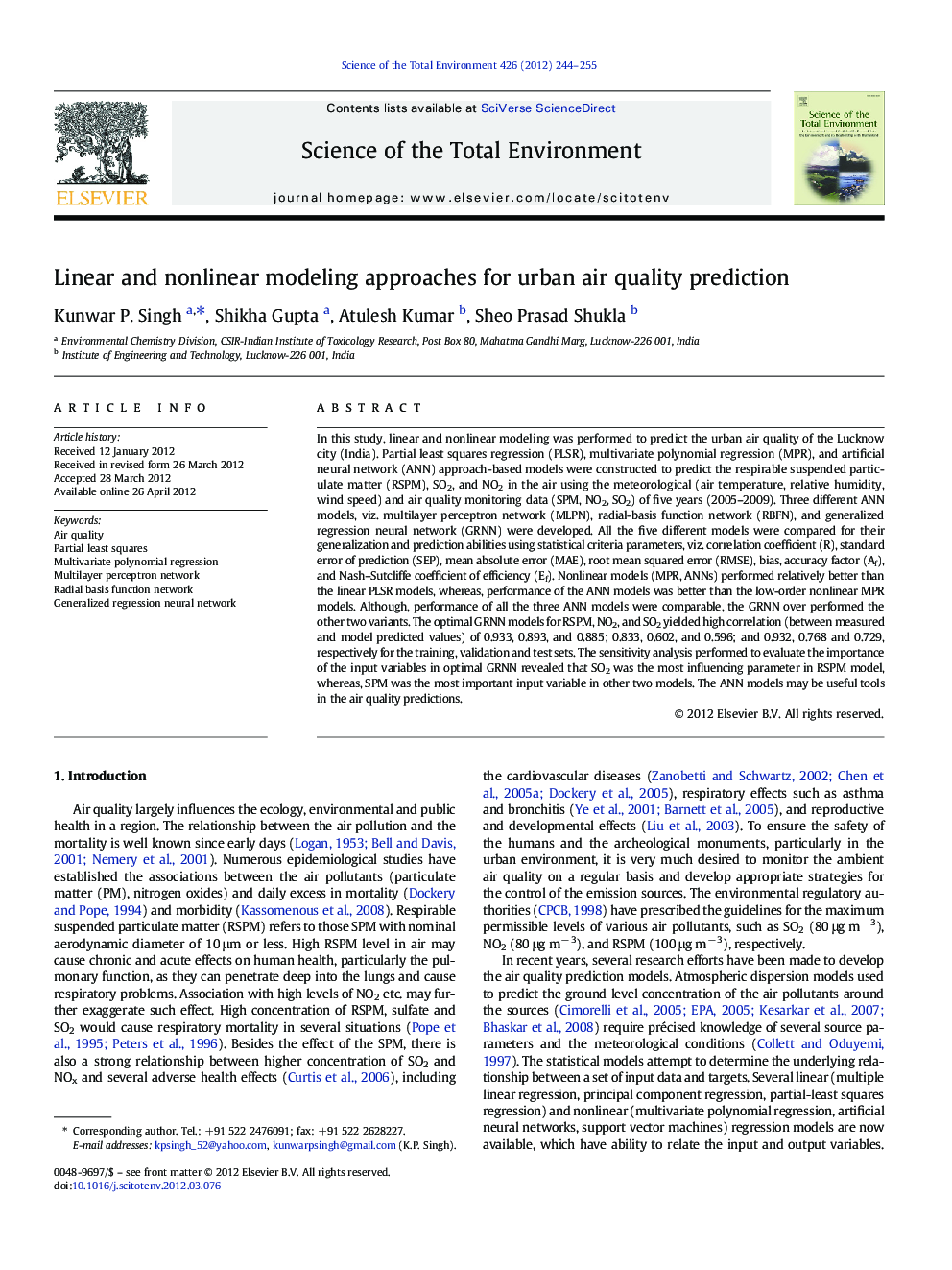| کد مقاله | کد نشریه | سال انتشار | مقاله انگلیسی | نسخه تمام متن |
|---|---|---|---|---|
| 4429476 | 1619825 | 2012 | 12 صفحه PDF | دانلود رایگان |

In this study, linear and nonlinear modeling was performed to predict the urban air quality of the Lucknow city (India). Partial least squares regression (PLSR), multivariate polynomial regression (MPR), and artificial neural network (ANN) approach-based models were constructed to predict the respirable suspended particulate matter (RSPM), SO2, and NO2 in the air using the meteorological (air temperature, relative humidity, wind speed) and air quality monitoring data (SPM, NO2, SO2) of five years (2005–2009). Three different ANN models, viz. multilayer perceptron network (MLPN), radial-basis function network (RBFN), and generalized regression neural network (GRNN) were developed. All the five different models were compared for their generalization and prediction abilities using statistical criteria parameters, viz. correlation coefficient (R), standard error of prediction (SEP), mean absolute error (MAE), root mean squared error (RMSE), bias, accuracy factor (Af), and Nash–Sutcliffe coefficient of efficiency (Ef). Nonlinear models (MPR, ANNs) performed relatively better than the linear PLSR models, whereas, performance of the ANN models was better than the low-order nonlinear MPR models. Although, performance of all the three ANN models were comparable, the GRNN over performed the other two variants. The optimal GRNN models for RSPM, NO2, and SO2 yielded high correlation (between measured and model predicted values) of 0.933, 0.893, and 0.885; 0.833, 0.602, and 0.596; and 0.932, 0.768 and 0.729, respectively for the training, validation and test sets. The sensitivity analysis performed to evaluate the importance of the input variables in optimal GRNN revealed that SO2 was the most influencing parameter in RSPM model, whereas, SPM was the most important input variable in other two models. The ANN models may be useful tools in the air quality predictions.
This figure shows the relative importance of the input variables in the optimal generalized regression neural network (GRNN) models for predicting RSPM, NO2 and SO2 levels in the urban air. It reveals that SO2 was the most important input variable in RSPM and SPM was the most important variable in NO2 and SO2 prediction models.Figure optionsDownload as PowerPoint slideHighlights
► Developed linear and nonlinear models for prediction of urban air quality
► PLSR, MPR, MLPN, RBFN, GRNN models constructed for predicting RSPM, NO2, SO2 levels
► Compared generalization and prediction abilities of models using air quality data
► Performance of ANN variants was comparable; GRNN models performed relatively better.
► Sensitivity analysis revealed SO2 and SPM as most influencing parameter in GRNN models.
Journal: Science of The Total Environment - Volume 426, 1 June 2012, Pages 244–255